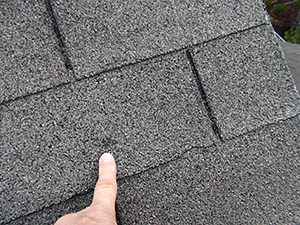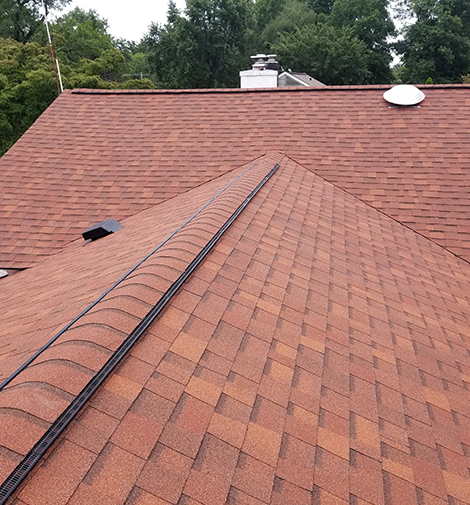

Hail 101
Is damage immediately noticeable? Not always. Hail impact may cause latent damage that can, over time, result in premature aging of the shingles. Without obvious visual damage, there is no real way to be sure how much, if any, damage shingles have encountered. Latent damage caused by hail or severe weather may not be apparent until months or years later and may cause the shingles to age prematurely.
Hail can cause all kinds of havoc up there, everything from a few loose shingle granules to leaks and deterioration. Typically, homeowner’s insurance will cover the repairs that come with shingle damage, but not the ones you don’t identify in a timely manner. And that’s the big problem with hail damage: often you don’t notice it until it’s too late. Most storms won’t completely wreck your roof, but they will compromise the structural integrity of your shingles and underlayment, leaving you vulnerable over time to leaks, rot, slipped shingles, and other deterioration.
Beyond aesthetics, hail damage will compromise the integrity of your roof. If you leave hail damage untreated, it can lead to shingle loss, roof leaks and further damage to your home. While repairing hail damage to your roof may be covered by your homeowner’s insurance, ignoring hail damage can lead to your insurance denying claims at a later time due to your negligence.
Granule loss at points of impact, which may be accompanied by surface depression. Loss of mineral granules as an immediate or gradual consequence of storm damage can lead to the asphalt coating being directly exposed to the elements. This may lead to accelerated aging of the shingle. Therefore, granule loss is NOT just cosmetic damage.
Call Now for a FREE NO obligation Damage Inspection,












